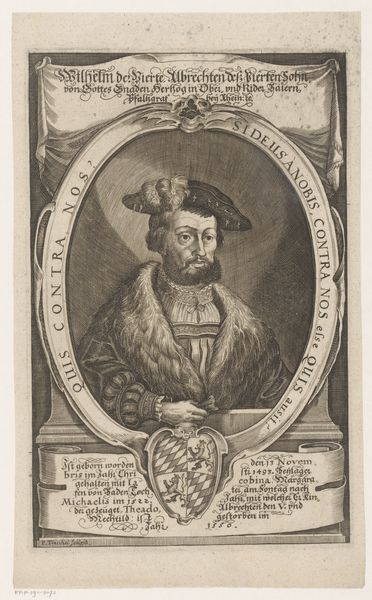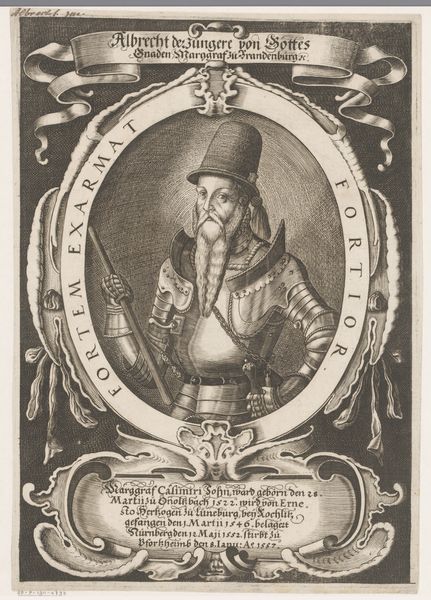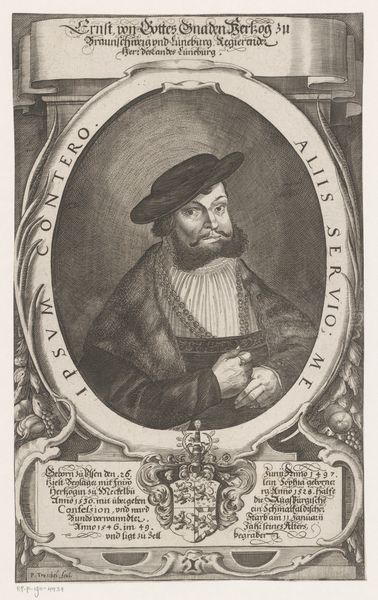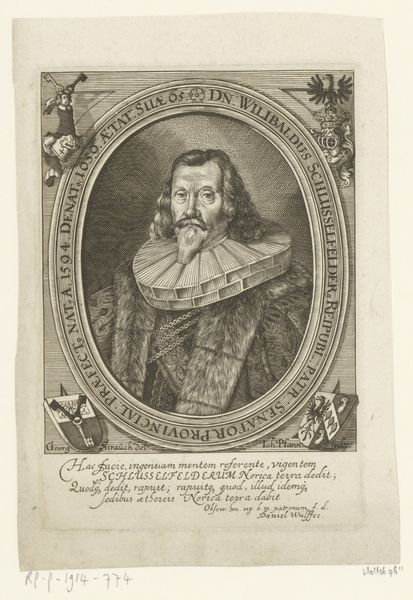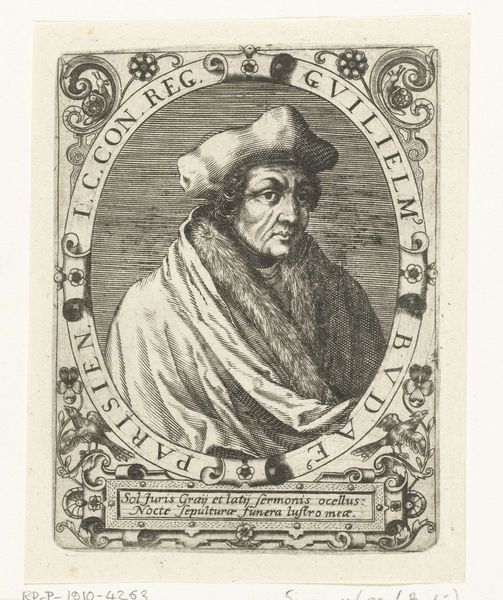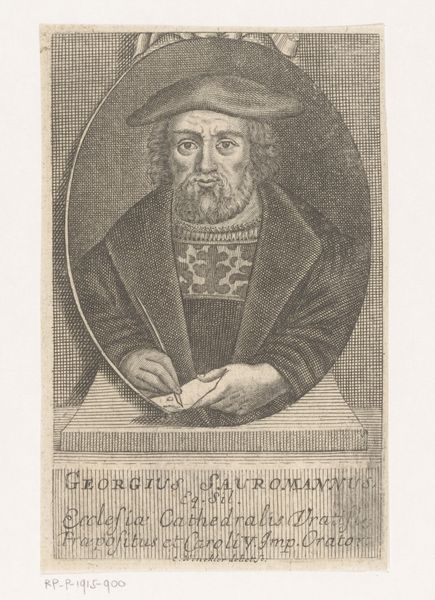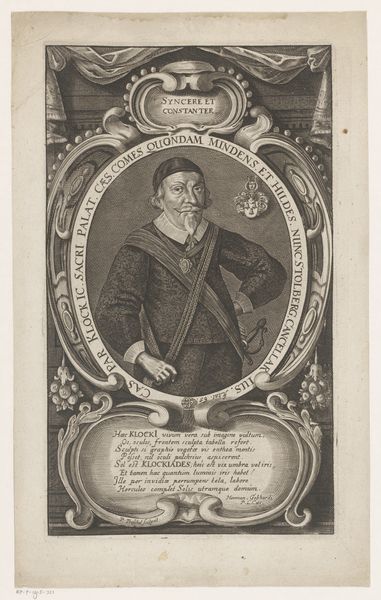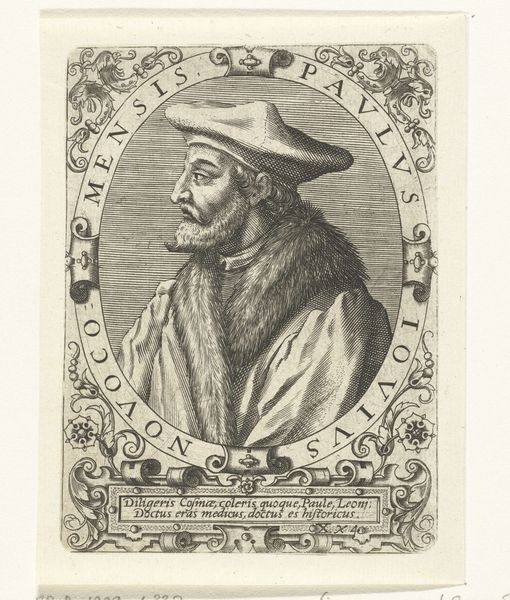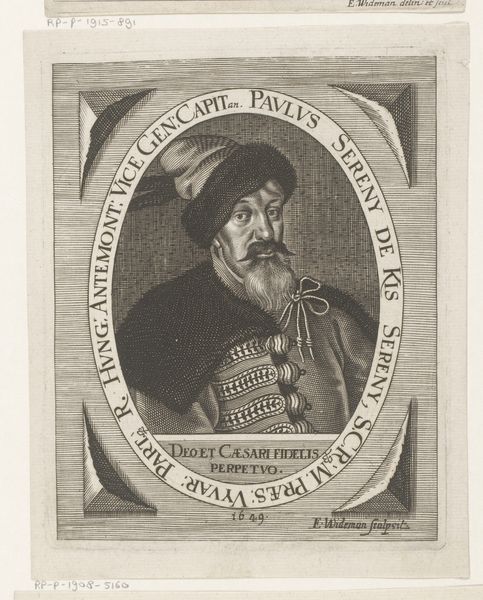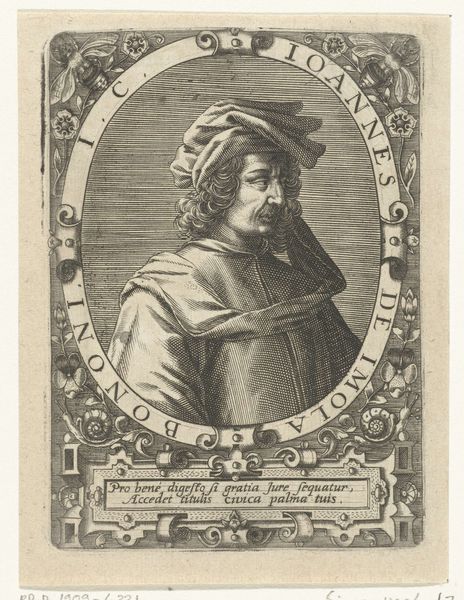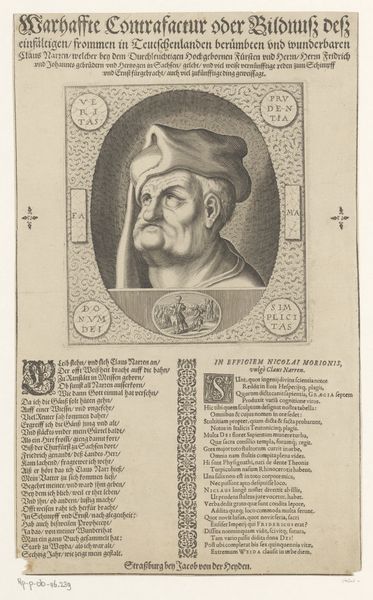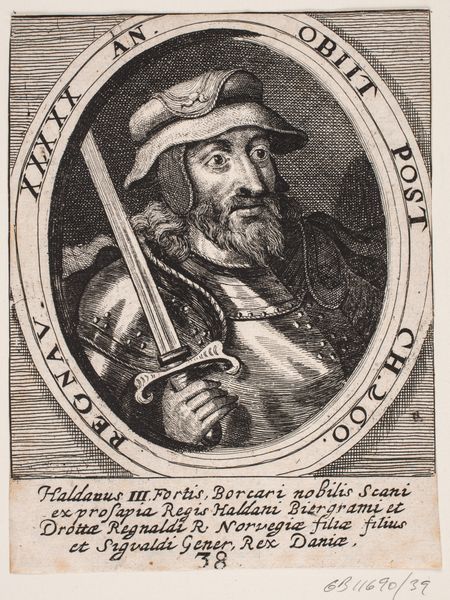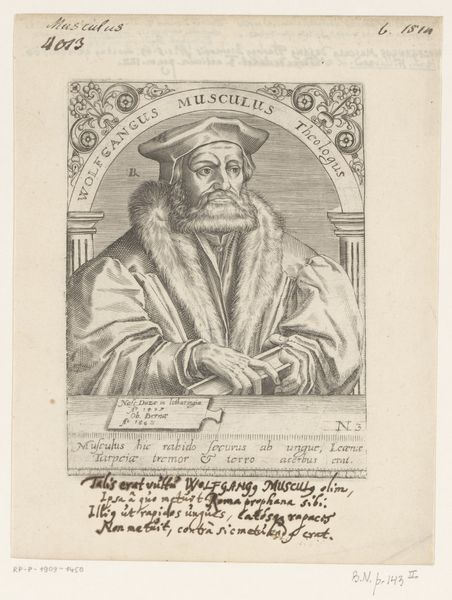
print, engraving
#
portrait
#
medieval
#
baroque
# print
#
old engraving style
#
history-painting
#
engraving
Dimensions: height 270 mm, width 183 mm
Copyright: Rijks Museum: Open Domain
Curator: Looking at this engraving, it evokes a sense of restrained power, doesn’t it? The subject looks directly out at us, framed by ornate flourishes and dense text. Editor: Indeed. What we're observing is a portrait of Louis X, Duke of Bavaria, crafted sometime after 1630 by Peter Troschel. What makes it particularly interesting is the use of printmaking during this era as a form of political imagery and commemoration. It’s history put on display. Curator: The choice of symbols surrounding the figure is also striking. The crest and inscriptions frame him, acting as proclamations of his power. Look closely at the laurel leaves. Editor: Yes, these images carried emotional, cultural, and psychological significance at the time. The text flanking the image, "Quis contra nos si Deus pro nobis", encapsulates this idea of divine right, a strong claim in a turbulent era. It means, "Who can be against us if God is for us?" It shows this portrait exists within a lineage of powerful, divinely appointed leaders. Curator: It suggests he and his lineage had some concerns over external threats and the legitimacy of his rule, using imagery to reinforce his authority through association with both the divine and tradition. What do you see reflected here about that cultural context? Editor: You're absolutely right. The composition deliberately utilizes classical forms – the oval frame, the formal pose – and intertwines it with the visual language of emerging Baroque aesthetics, giving it a feeling of established power seeking novelty. The medium itself, an engraving, lent itself to mass distribution and solidified the Duke's image in the public sphere. Curator: A very public declaration through a relatively accessible medium, compared to painting. This work exemplifies the relationship between art, authority, and the construction of identity. I leave feeling that political portraiture continues this method of symbolic communication even now, centuries later. Editor: A good point; it's fascinating to trace those threads of cultural memory. Looking closely at symbols and design here illuminates much about this ruler and his strategy for holding power during a period of unrest and constant challenge to traditional authority.
Comments
No comments
Be the first to comment and join the conversation on the ultimate creative platform.

